In-wheel motors could be the future of electric cars | CNN Business
London
CNN Business
—
In 1900, Ferdinand Porsche and Ludwig Lohner unveiled an electric car with battery-powered motors attached to its front wheels. It was seen as a sensation, but the technology never took off as petrol cars accelerated to world domination.
More than a century later, in-wheel motors are making a comeback. Mounted in the rim of an electric vehicle’s wheels, the motors increase efficiency by delivering power directly to where it’s needed most.
“In-wheel motors are a game changer,” says Luka Ambrozic, chief commercial officer of Slovenian company Elaphe Propulsion Technologies, one of the leading developers of the technology. They offer the “ultimate freedom of design,” he says, giving vehicle manufacturers the opportunity “to build better and smarter cars.”
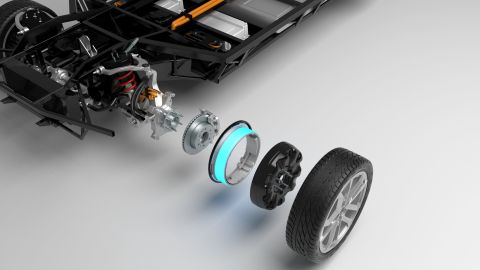
Elaphe’s design incorporates all the parts of a motor within a standard wheel hub, including suspension, brakes and motor rotor.
Elaphe Propulsion Technologies
By packing everything into the wheels, there’s no need for other components like a gearbox or a drive shaft which usually transfers power from the onboard motor to the wheels.
This makes the car lighter, Ambrozic tells CNN Business, and it saves energy by reducing the distance the power has to travel. It also frees up space in the vehicle and allows the manufacturer to make the car more aerodynamic. A more aerodynamic vehicle in turn needs less power, which can mean smaller batteries and lighter vehicles, he adds.
Supercars and pickup trucks
Elaphe, which was founded in 2006 by Gorazd Lampič and quantum physicist Andrej Detela, has designed in-wheel motors for a range of electric vehicles. The Lightyear 0, notable for curved solar panels built into its roof, is equipped with motors co-developed by Elaphe’s in each of its wheels. Lightyear says the car will go into production this year and will have the most efficient production powertrain in the world.
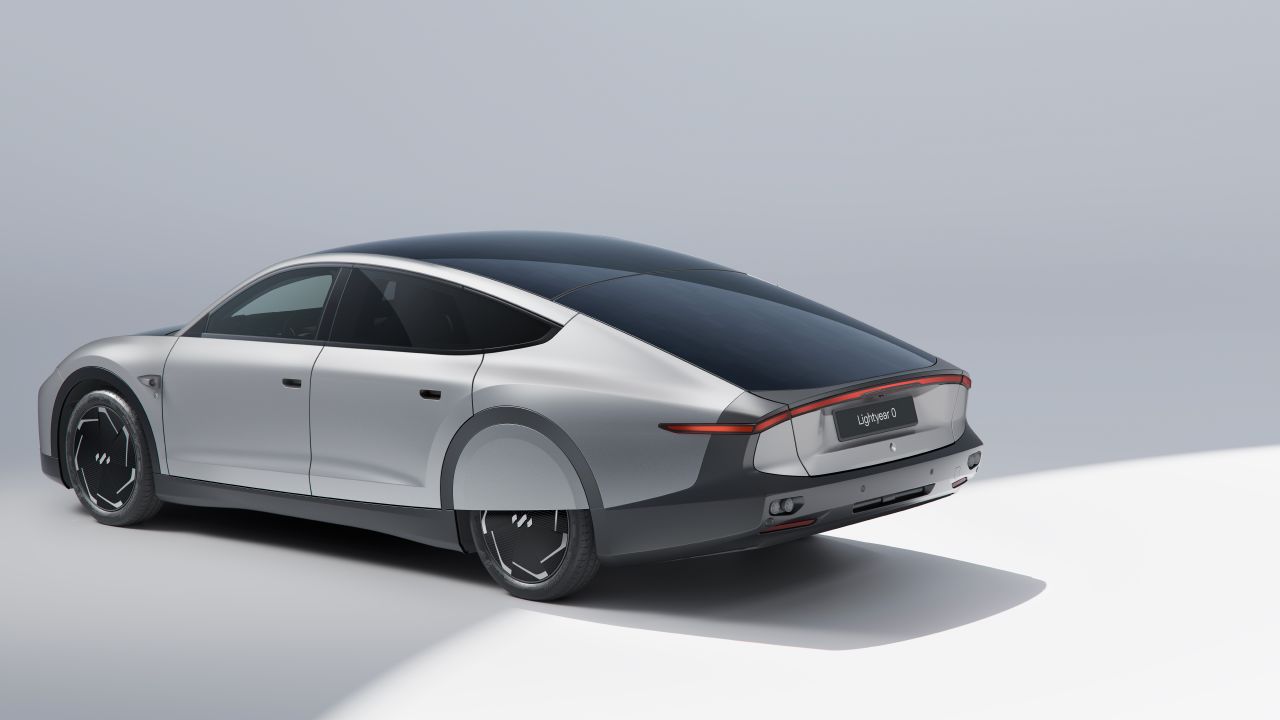
The Lightyear 0 car, shown here in a rendering, will begin production this fall. In addition to charging at plug points, it will get a boost from the solar panels on its roof, hood and trunk.
Lightyear
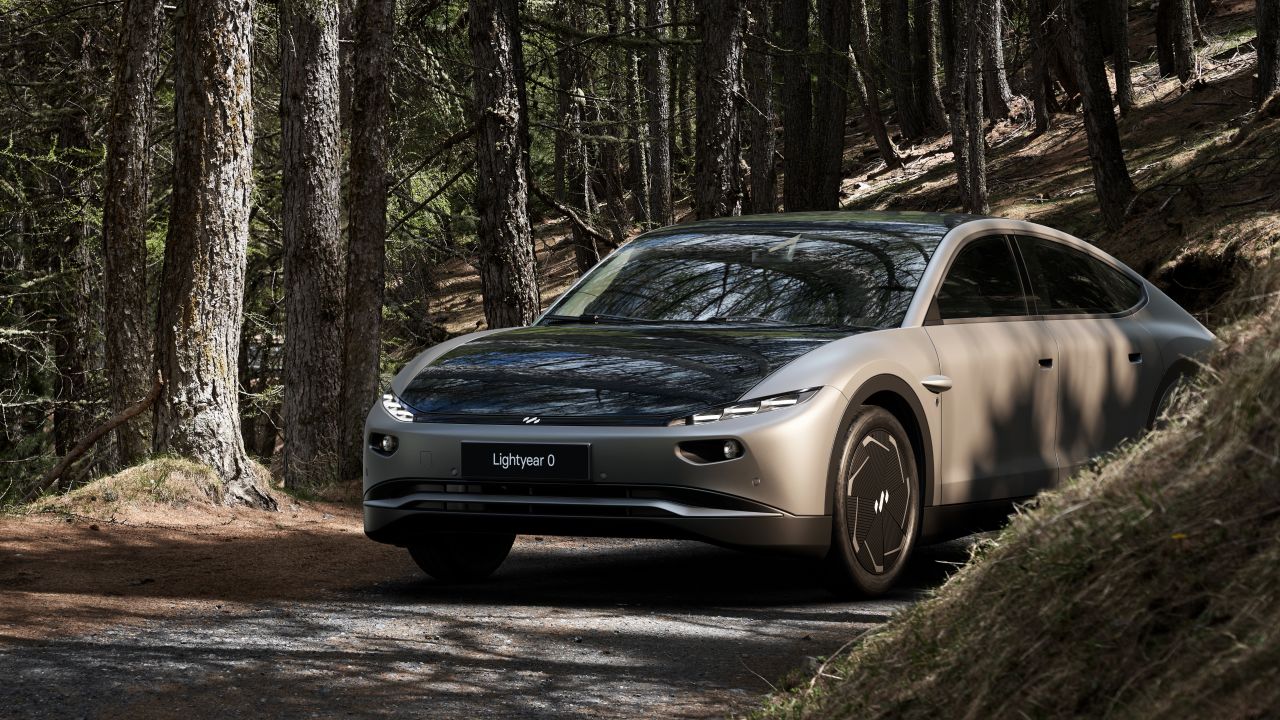
Dutch company Lightyear says the car, shown in a rendering, will initially cost €250,000 ($262,000).
Bart Geers/Lightyear
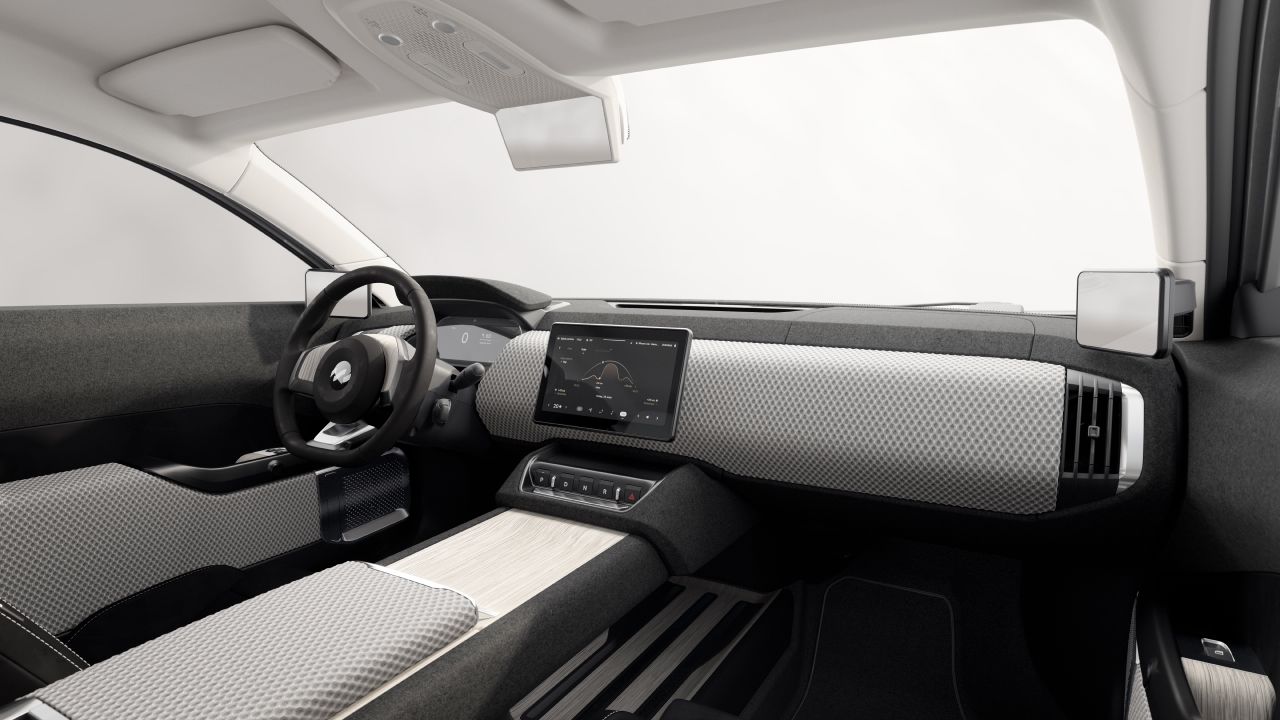
A rendering of the interior of the car, which will be able to drive around 388 miles without stopping to recharge, and will have an additional range of up to 44 miles a day from the solar panels.
Lightyear

If production goes ahead as planned, the Lightyear 0 will be the first solar-assisted car on the market, but others are in development. The Sono Sion, slated for production in 2023, will have a range of 190 miles and promises to provide an average of 10 miles of solar range per day, in addition to plug charging.
sono motors

Aptera is developing a solar three-wheeler, which it hopes to begin producing in 2023.
Aptera

It’s not just cars that are being fitted with solar panels. During September and October 2021, a campervan powered entirely by the sun was driven almost 2,000 kilometers (1,242 miles) across Europe without stopping for fuel or plugging in to charge.
STE / Rien Boonstoppel
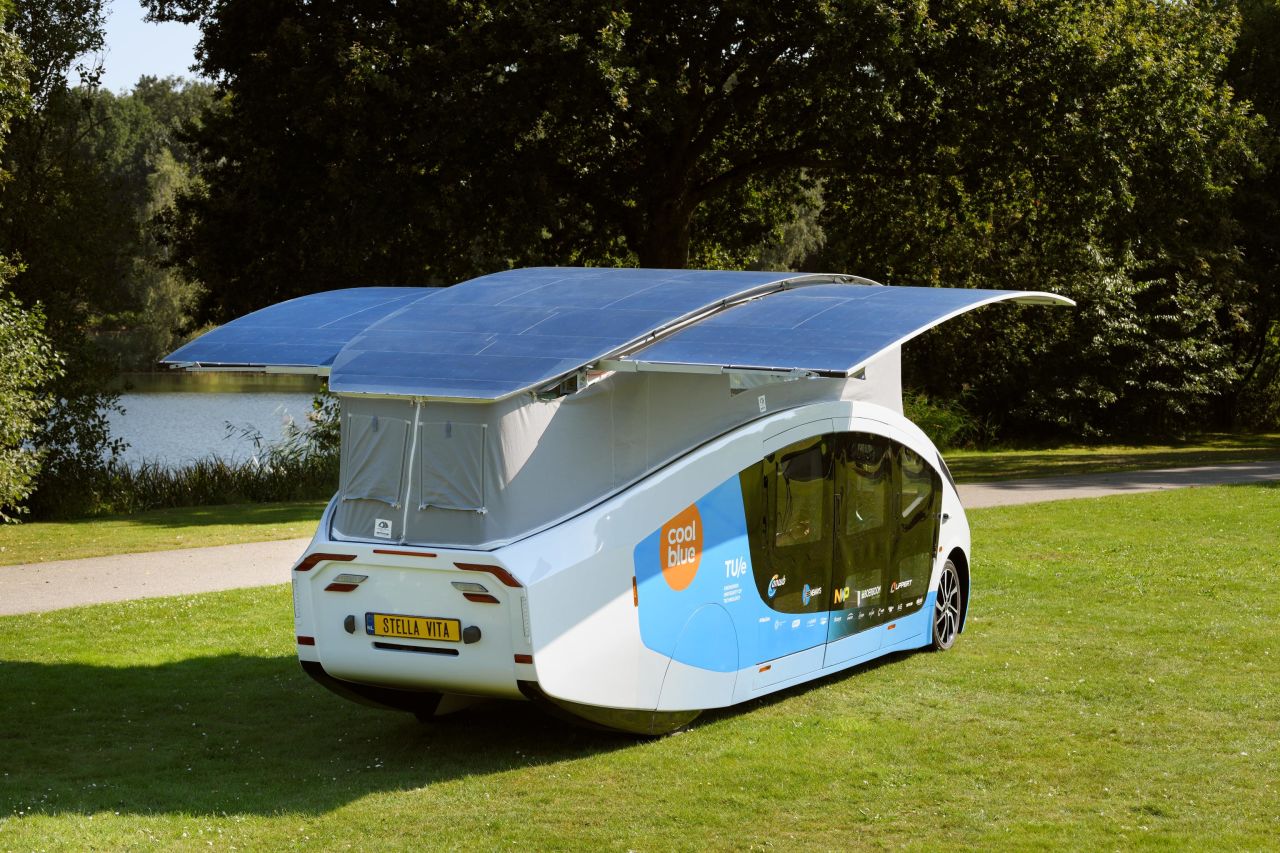
Named “Stella Vita,” it was produced by Solar Team Eindhoven 2021, a group of 22 students at the Eindhoven University of Technology in the Netherlands. The university has developed a number of solar vehicles in recent years and Lightyear was founded by its alumni.
STE / Bart van Overbeeke
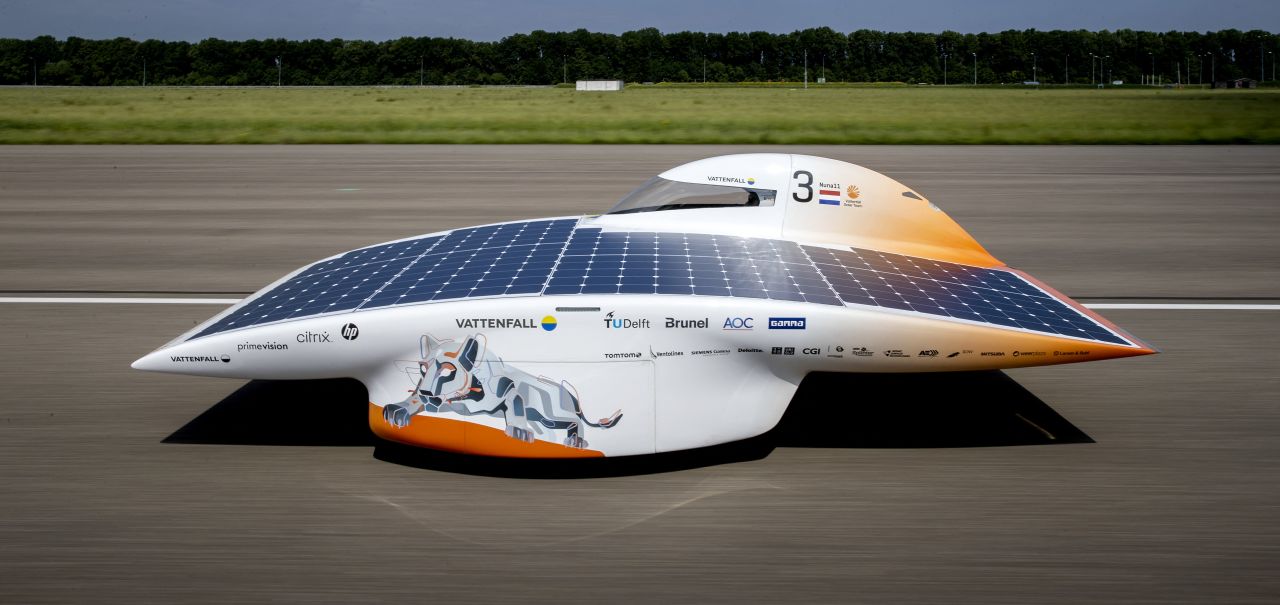
Every two years, solar-powered vehicles race at the World Solar Challenge event — and the competition has inspired some innovative designs. Last year, Vattenfall Solar Team, made up of students from Delft University, in the Netherlands, finished third at Solar Challenge Morocco with a solar-powered car called Nuna 11. The unusual vehicle has three-wheels — two on the right and one on the left.
KOEN VAN WEEL/AFP/ANP/AFP via Getty Images

The 2019 World Solar Challenge, pictured, was won by Belgium Agoria Solar Team, a group of engineering students. In June 2022, the team said it set a new world record, driving 1,051 kilometers (653 miles) in 12 hours in a car powered entirely by the sun.
BRENTON EDWARDS/AFP/AFP via Getty Images
Lightyear 0 is the world’s first production-ready solar-assisted car
Aptera Motors, another company that develops solar electric vehicles, has enlisted Elaphe to supply in-wheel motors for its lightweight three-wheeler design, although production is yet to begin. And Lordstown Motors is using Elaphe’s hub motors for its new Endurance line of electric pickup trucks, which it says give the truck genuine four-wheel drive. Commercial production of the pickup truck began in September.
These examples show that in-wheel motors can be used for both lightweight and heavy-duty applications, says Ambrozic, although the designs must be tweaked for each purpose. “It’s not about having a one-size-fits-all motor,” he says.
But some industry experts believe in-wheel motors may have limited uptake in mainstream markets. James Edmondson, a senior technology analyst specializing in electric vehicles for market research firm IDTechEx, notes that most big car manufacturers have based their EV platforms on onboard motors. Introducing in-wheel technology would require a complete redesign of the system. “If you have to start from scratch and build up your vehicle from the ground up, it’s a huge investment,” he says.
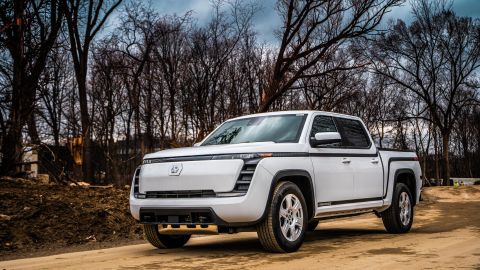
All four wheels of the Lordstown Endurance pickup truck are equipped with Elaphe’s technology.
Lordstown Motors
Manufacturers are also concerned about durability and suspension, says Edmondson. In-wheel motors are far more exposed to the elements as well as impacts and vibrations from the road. The motors also make wheels heavier, which can reduce ride comfort, although Edmondson notes this could be compensated for by the weight saved elsewhere on the vehicle.
Rising trend
According to a 2021 report from research firm Markets and Markets, the demand for in-wheel motors is expected to rise in line with the growth of electric vehicle sales, reaching a value of more than $4 billion by 2026, up from $800 million in 2021.
The report notes that as electric vehicles become more popular, automakers are looking towards in-wheel motors for their space-saving abilities and improved power efficiency.
Another major player is Protean Electric, which was acquired by British electric vehicle maker Bedeo in 2021. This year, the company announced a new partnership with Dongfeng Motor Corporation Tehnical Center, a Chinese state-owned automobile manufacturer.
Elaphe is also eyeing up China for expansion. It plans to scale up its output to more than 100,000 in-wheel motors a year in Slovenia by next year, before launching production in both the United States and China.
“Now is the time for commercial expansion and production expansion,” says Ambrozic. “We want to be a step ahead of the market to make sure we are ready when the opportunities are right.”















![Toni Kroos là ai? [ sự thật về tiểu sử đầy đủ Toni Kroos ]](https://evbn.org/wp-content/uploads/New-Project-6635-1671934592.jpg)


